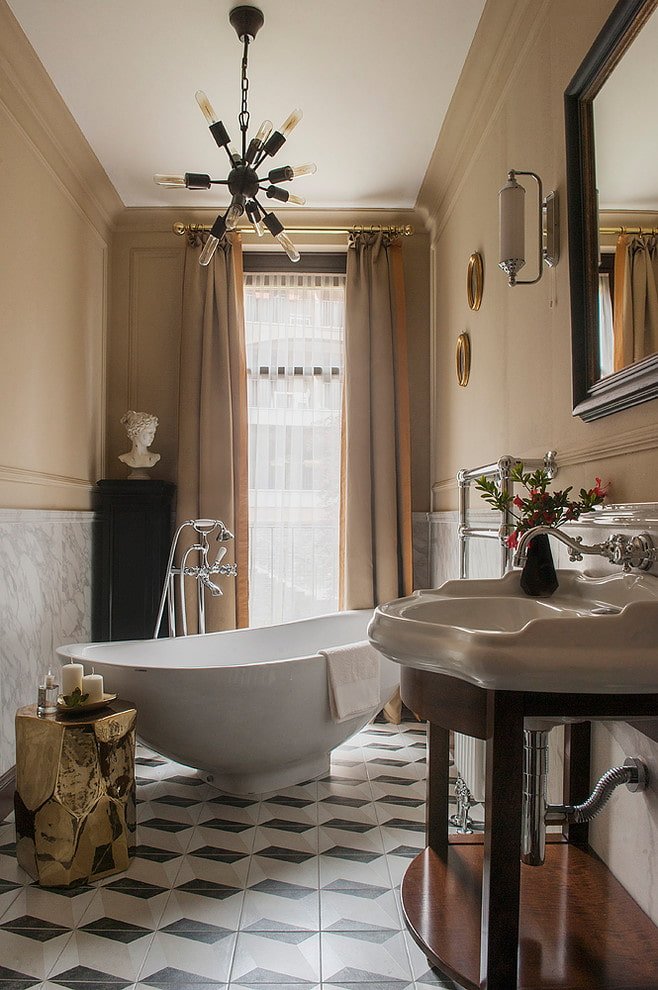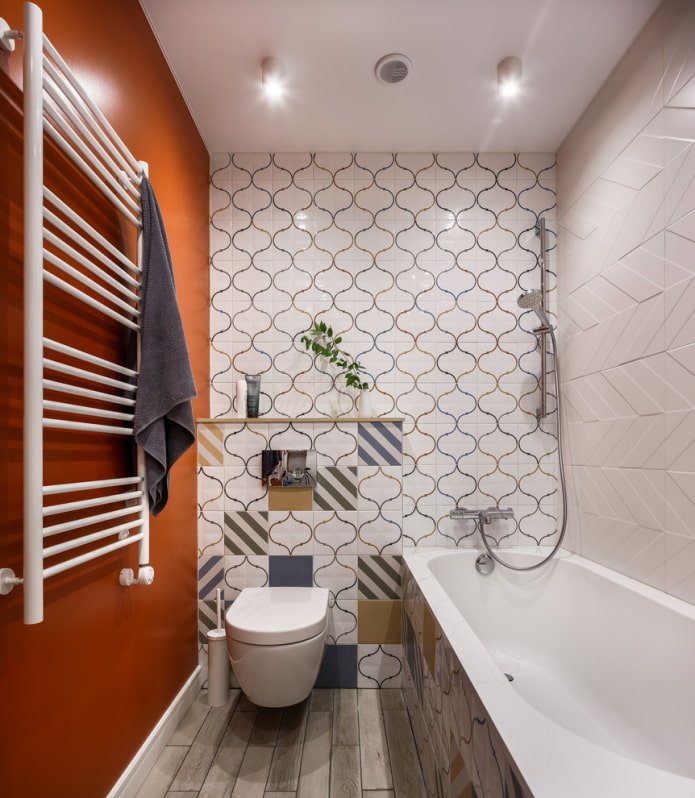Tiles in wet areas
This technique is appropriate if you want to make the environment more diverse and dynamic, protecting all the “weak” places of connection of sanitary devices (sink, bathtub, toilet) with the walls. A bathroom with tiles in wet areas performs its main function, protecting surfaces from moisture, and also gives them texture.
In this case, the paint takes up most of the walls, visually uniting the interior. Water-based, latex and acrylic paints are suitable for the bathroom.



Only the shower area is tiled
This option is the most economical, since only the area above the bathtub or the surface around the shower is tiled. If you want to create an accent, choose tiles that contrast with the walls, and if you dream of a calm, enveloping interior, buy materials that are as close in shade as possible.
Try not to skimp on paint and buy a composition specifically for the bathroom – this information is indicated on the packaging.



Half the wall and the shower area are tiled
This approach combines the previous two, but more tiles are required in such an interior. The decor is more classic and thoughtful. The scheme is as follows:
- the shower area is completely tiled;
- the remaining walls are divided in half or in a 60/40 ratio;
- the lower part is decorated with tiles and protected with film;
- the upper part is painted.
The main advantage of this solution is complete protection of the walls from moisture in combination with decorativeness.



Painted area under the ceiling
Some people think that this technique reminds them of the “Soviet” version of bathroom tiling, but it still remains relevant. The idea can be implemented in both expensive classical style and luxurious art deco.
Looks great with high ceilings and allows you to save on the amount of tiles. It is also appropriate for low ceilings, when there is about 40 cm of free space above – the painted area looks like a frame and is complemented by moldings.


Tiles as accents
This approach helps to adjust the proportions of the room, highlighting certain areas – for example, a niche, a wall around the sink, etc. mirrors, part of the shower area.
The interior shown in the photo uses colorful tiles and gray paint to match: bright accents set the mood of the bathroom, enhance its decorativeness and shade what is not intended to attract attention.

Half of the bathroom is painted
This traditional technique involves dividing the wall into two sections. With this approach, the decor looks strict and laconic, so you can play with the decor. The proportions can be varied by painting a smaller or larger part of the walls.
With even laying, the joint can be left untreated. A variant with a frame in the form of narrow tiles or mosaics, as well as a ceramic figured border, appropriate in a classic style, is possible.


Only one wall is painted
The combination is ideal for small bathrooms and also allows you to save money. Usually, a painted wall does not come into contact with plumbing fixtures, at most with a heated towel rail.
The color of the paint should echo the shade of the tile, its elements, or even the color of the grout: this helps to bring the design into a single whole.


Since both tiles and paint are not afraid of moisture, and the range of materials knows no bounds, the combination is considered ideal for a bathroom. Thanks to this, the design is not only original, but also economical.
Now reading:
- Wall decoration: more than 90 photos of panels and interesting design ideas.
- 70 creative photos of gold curtains for the bedroom, living room, kitchen and children’s room.
- 39 unique ideas for stylish decoration of a summer cottage well.
- Dark Kitchen: Inspiring Design Solutions and 33 Interior Photos
- Curtains for a compact bedroom: inspiring photos and design solutions